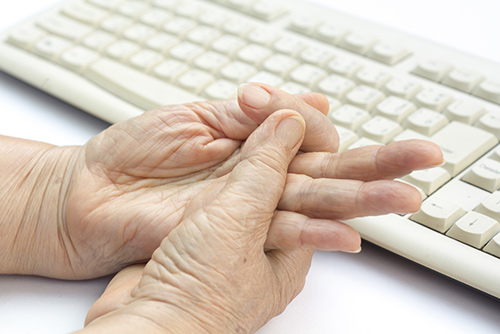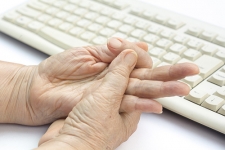
Trigger finger, also known as stenosing tenosynovitis, is a condition where one of your fingers gets stuck in a bent position due to inflamed tendons. Most patients who have trigger finger complain about their finger popping, locking in a bent position, or barely being able to bend. This condition can make doing simple daily tasks difficult, and it can be quite uncomfortable and painful. In this blog, we’ll cover who is at risk and the symptoms, diagnosis, and treatment for trigger finger.
Who Is Most At Risk
People who work and/or have hobbies that involve repetitive gripping are at high risk for developing trigger finger. Careers such as farmers, musicians, and industrial workers have to be vigilant about taking breaks and stretching their hands often. Other risk factors include: being female, being 40-50 years old, having a previous hand injury, or having another health condition (diabetes, gout, rheumatoid arthritis, etc.).
Symptoms
Here are the most common symptoms of trigger finger:
• Pain, soreness, or tenderness near the base of the finger or thumb
• A painful snapping or clicking when trying to straighten or bend the finger
• A bump around the base of your finger near the palm
• Stiffness in your finger
If you don’t get treatment , your trigger finger symptoms can worsen over time. Severe cases of trigger finger have the finger locked in a straight or bent position, and the finger is unable to move on its own.
Patients commonly experience worse symptoms in the morning, and they ease up as the day progresses.
Diagnosis
If you think you might have trigger finger, your best course of action is to schedule a visit with your doctor. During the office visit, your doctor will examine your fingers and hand. They’ll look for a bent finger, swelling, bumps, and ask you to open and close your hand. It is typically easy to diagnose since there is a visual impairment as the affected finger will likely be locked, bent, or stiff.
Treatment
Depending on the severity and duration, the treatment will vary. At-home or physical therapy treatment may include a variety of resting, wearing a hand splint, and doing stretching exercises. For more severe cases involving prolonged inflammation, medication or steroid injections may be prescribed to help relieve discomfort and pain. If the condition persists, surgery may be necessary. Luckily, trigger finger is one of the most commonly treated conditions for hand surgeons and has several successful treatments.
Visit Prairie Orthopaedic
Trigger finger can hinder your lifestyle and make certain activities hard to do. To prevent any further symptoms and to relieve the pain, make an appointment with Prairie Orthopaedic & Plastic Surgery in Lincoln, NE. Regardless of the treatment, our orthopaedic surgeons and physical therapists here at Prairie Ortho are dedicated to helping our patients achieve the best possible outcome for their condition! Call us at 402-489-4700!

